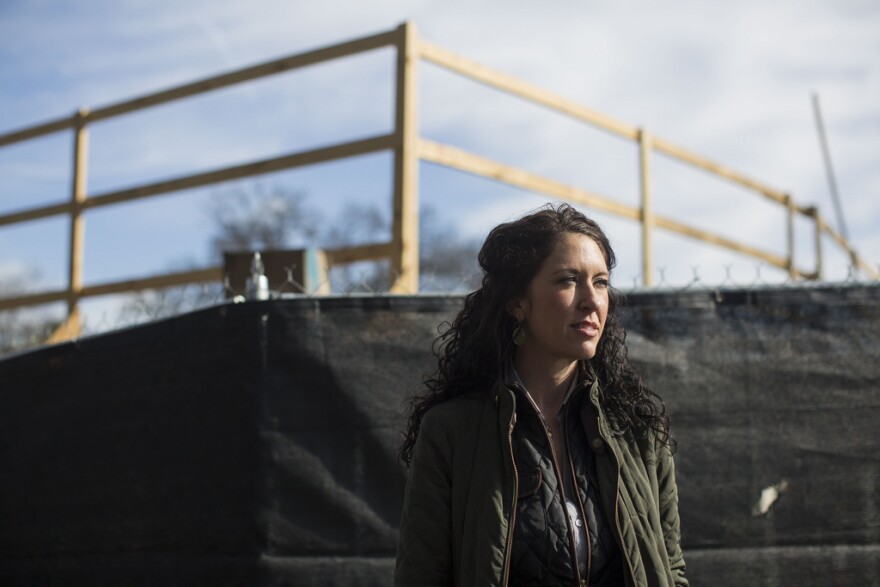Some buildings in Austin reflect the city's zoning restrictions more than others.
Take the 35-unit affordable housing complex just south of East 12th Street. The building, which houses low-income single mothers and provides on-site child care, looks a bit like a tiered cake.
That's because there are rules in Austin about how high you can build relative to what already exists nearby; the farther away from a single-story home, for example, the higher you can build.
"When you get to 50 feet, you can do three stories," said Mark Rogers, executive director of the Guadalupe Neighborhood Development Corp., which built the complex. "You need to get 100 feet away before you can go to the fourth story."
He said the nonprofit lost seven units because of these rules. Then there was a limit on how high the building could go – 40 feet.
"When you literally have 10 feet per floor, it gets very difficult to put your mechanical stuff – your heating and cooling, your plumbing, your electrical – between the floors, so you end up down into the living space," Rogers said. "We used to joke that we could only allow people to rent that are 5'6" and under here. We didn't do that, mind you."
"If you're producing affordable housing that families in Austin need, then we want to get out of the way and let you just do it."
The Austin City Council took the first steps Thursday to finalize a program it hopes will make it easier for low-income housing developers to get through the city’s building process – and, as a result, build more. The vote was unanimous.
This new program waives certain zoning rules – including height and density restrictions and minimum parking requirements – for complexes with at least three housing units and where at least half of the units are affordable, on average, to a family of four making $51,600 a year.
“The goal is to reduce red tape and reduce the need for affordable housing builders to hire lawyers and to spend months dealing with City Hall,” Council Member Greg Casar, whose office worked on the program, said at a press conference before the vote. The program still requires a final vote from council members once the city’s Planning Commission and staff have time to look it over.
“If you’re producing affordable housing that families in Austin need, then we want to get out of the way and let you just do it,” Casar said.
Developers – both of low-income and market-rate housing – often complain that building new housing can take years because of city bureaucracy. Currently, if they want restrictions waived they have to go in front of City Council.

"Everything here takes a long time," said Megan Lasch, who represents Saigebrook Development, LLC, which is building a 70-unit low-income apartment complex in South Austin. "Looking at things project by project, it's going to take up more time from city staff. It continues to increase the barrier to entry for getting these units on the ground."
People who testified about the proposed housing program Thursday were largely in favor of it. Austin resident Jim Templeton, however, argued that relaxing zoning restrictions to allow taller buildings next to smaller homes would hurt long-standing residents – a sentiment expressed often during the city’s debate on CodeNEXT.
“It seems to me that building a three-story monolith that is hiding half the front yard and half the backyard will in fact harm those persons,” he told council members. “It will remove the light that they see, the view that they see. It will harm the character of the neighborhood.”
Low-income housing developers often fund new projects through a combination of city money, federal tax breaks and private investment. In November, voters approved $250 million in bonds to be used for affordable housing. Council members said Thursday the money could now fund more housing units with the relaxed restrictions.
“We’re sending a message to the voters: We hear you,” said Council Member Natasha Harper-Madison. “And we’re ready to act creatively and quickly to find equitable solutions to address institutional problems.”
In 2017, the city passed its first comprehensive housing plan, which included the goal of building 60,000 new housing units for low-income residents over the next decade. Affordable housing advocates say a measure like the one council members passed will help the city make good on that promise.






